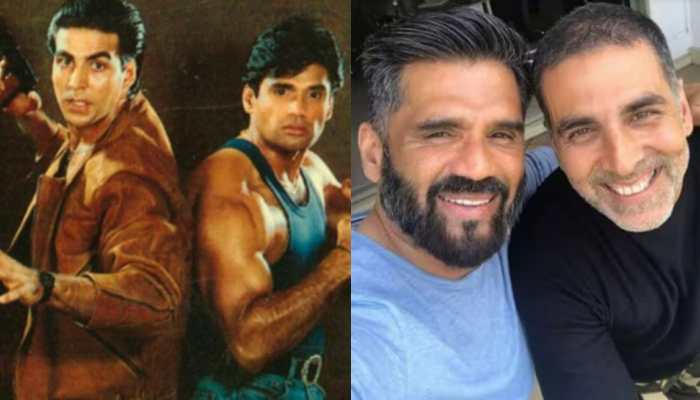Shampa Sen
Saddam Hussein, the Iraqi dictator, was born on April 28, 1937 in a small village, al-Auja near Tikrit. Saddam’s early life was turbulent. He was not fortunate enough to get the security of a family. His father Hussein al-Majid left them when he was still a child. His mother Subha Tulfah married again to Ibrahim Hassan who was unkind and abusive towards Saddam.
Saddam’s life drastically changed when he was sent away to stay with his maternal uncle Khayrallah Tulfah in Baghdad. It can be said that Saddam learnt the nitty grittys of politics from his uncle. Not only that, Saddam also inherited strong anti-British and anti-imperial sentiments from his uncle.
More than academics Saddam understood the complexities of politics. He was not a very good student. After finishing intermediate school at 16, he could not join the prestigious Baghdad Military Academy because of poor marks. When he was 24, he finished his high school in Egypt. Saddam entered Cairo University School of Law in 1961 but did not finish his studies.
Saddam’s political stint started in 1956 with unsuccessful coup attempt. In 1957 he joined the Baath Party and became a part of the radical nationalist movement. The Baath party split in 1963 and Saddam was made the member of the Baath Regional Command by Michel Aflaq. After that there was no looking back.
Saddam became deputy Secretary-General of the Baathist in 1966. In 1968 his mentor General Bakr and the Baathist seized the government. This gave a great impetus to his career. He was made the Deputy Chairman of the Revolutionary Command Council, in charge of the internal security. At the age of 31 he had acquired the second spot in the Baathist party. He remained at this position for the next 10 years.
In July 1979 Saddam forced ailing President Bakr to resign and took over himself.
Saddam’s Regime
Saddam rose to supreme leadership in 1979. “The Butcher of Baghdad” as he was called, his era was marked by extreme cruelty and repression against all opponents. He waged a long and costly war against neighbouring Iran (1980-88), backed by arms and aid from the US, UK, as well as France, Russia, Germany and others. US gave him military advisors, satellite intelligence and even supported his chemical weapons attacks against Iranian forces. This war was fought mainly against Shiite Muslims. Saddam also tortured the Kurds of his own country for supporting Iran.
Saddam provoked Washington’s ire when he invaded Kuwait in August 1990, leading to UN sanctions and then UN-approved military action, led by the United States. Since then the former favourite was pictured by the US as one of the world’s most dangerous criminals.
Saddam gave stability to Iraq. Earlier, Iraq had been split along social, ethnic, religious, economic lines. There were Sunnis versus Shiites, Arab versus Kurd and was a country rife with factionalism. Saddam modernised the Iraqi economy. He built a strong security apparatus to prevent coups within the power structure. He broadened his base amongst all sections of society and gained mass support. Saddam very tactfully handled conflicts between the government and the armed forces.
Saddam was a shrewd politician. He knew exactly what was needed to remain in power. He appointed his family members to important posts of authority in the Iraqi government. He built a big security apparatus and had spies and informers everywhere. He now began to control Iraq’s oil and other industrial enterprises. With the help of his aides and security network Saddam took over many of Iraq’s leading businesses.
In early 1970’s Saddam nationalised the Western-owned Iraq Petroleum Company. During this time the country’s economy was growing at a very rapid pace.
After nationalising foreign oil interests, Saddam supervised the modernisation of the countryside, mechanising agriculture on a large scale, and distributing land to poor farmers. The Ba`athists established farm cooperatives, in which profits were distributed according to the labours of the individual.The unskilled were also trained.
Saddam’s Lifestyle
Saddam lived like a king. He accumulated wealth, power, position that he had always longed for. The only thing that missed in his life was sleep and a fixed routine. He simply could not afford it due to security reasons. He had to steal sleep. He varied the location and time of his sleep to avoid predictability. He usually slept four to five hours only. He never slept in his palace. He moved from one secret bed to another. After getting up at about three in the morning he always went to swim. All his palaces and homes had pools. As water was perceived as a symbol of wealth and power in a desert country like Iraq there were fountains and pools, indoor streams and waterfalls everywhere. These pools were checked every hour due to security reasons. Saddam also had many look alikes to fool his enemies.
The Last War
US-led coalition invaded Iraq on March 20, 2003. U S President George W Bush and his administration claimed that Iraq possessed an arsenal of weapons of mass destruction which posed an "urgent threat" to the US and the world.
In his glory days, Saddam sat pretty relishing the fact that he had invaded Kuwait, burned its oil fields in a dastardly act of eco-vandalism, he was responsible of killing 5,000 of his own people with chemical weapons at Halabjah, and putting 400,000 of his constituents into mass graves. But this time things changed. In his last battle, Saddam fought hard but this time he could not withstand the US assault. In July 2003 his sons Uday and Qusay were killed by US forces. Subsequently he lost his grandson. His most trusted people had cheated on him by revealing his secret hideout to the US soldiers. Finally on December 14, 2003 U.S. soldiers pulled him out from his so-called spider hole near Ouja in Iraq.
Saddam was tried by the interim Iraqi government for crimes against humanity. It is believed that he did not get a fair trial. Three of his lawyers were assassinated during the trial. This led to a boycott of the trial by their colleagues and a hunger strike by Saddam. On November 5, 2006 he was pronounced the death sentence. On December 6, Saddam appeared in court for the last time. The proceedings were delayed for an hour as Saddam did not want to appear in court. On December 26, his appeal against death sentence was rejected. He was to be executed within 30 days. Finally Saddam was hanged to death on 30th December, 2006 for the killings of 148 Shiites from Dujail.
Saddam lived like a king and died like a king. Till the end he did not bow. He refused to cover his face while hanging. Saddam was buried in Ouja where many attended his funeral. His death had a mixed reaction all over the world.
What cannot be denied is that Saddam gave Iraq stability and had the guts to stand up against the mighty US. He was despised by several yet loved by many. Such was his charisma that Saddam still remains alive in the hearts and minds of millions even after his death.







)
)
)
)
)
)
)
)
)
)
